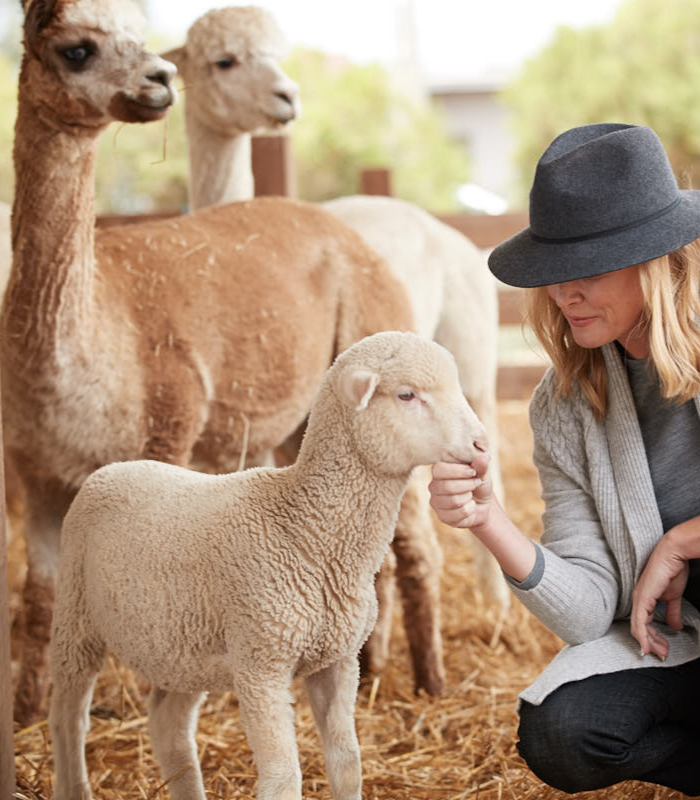In 2022, there are two primary preparation processes for wool, boiling or recycling, each that will offer a different result.
Boiled Wool
Boiled wool is often used in fashion garments and is knitted then washed and agitated in boiling water and soap. This process causes the fibre of the wool to compress, resulting in an extra-warm, windproof, highly functional and wearable material perfect for coats, jackets and jumpers.
This results in heavily weighted clothing which is often recommended for dry clean only.
Recycled Wool
Recycled wool relies on upcycling post-consumer textile waste and offers a sustainable solution to the environmental issue of growing waste. Yarns, fabrics and throws can be made using very little water with no dyes or chemicals in the manufacturing process. Any chemicals that are used to manufacturing these products adhere to environmental protection standards.
Creswick Woollen Mills designs recycled woollen blend blankets and throws that are cosy and super soft, promoting a low carbon impact. All recycled woollen products are created in Australia and made in sustainable mills in India where the focus is reducing the impact on natural resources.
The process of recycling wool involves the following steps:
1. Sorting
Used clothing bales are sorted according to fibre composition on a long conveyor belt. Cotton from wool, acrylic and other synthetic garments are separated by fibre type then sorted by colour and then sent through our cleaning process.
2. Cleaning
During the cleaning process, objects from the garments such as buttons, zips, labels and all other trims are removed. These cleaned pieces are called “Clips” which are put into a Rag Tearing machine where the fibre is mechanically pulled apart.
3. Blending and Colour Matching
Once the fibre is recovered from the tearing machine, it is blended with other fibres such as regenerated polyester for added strength during the spinning process.
As only used rags or clothing are used in recycled products, there are no dyes in the production process. To avoid colour variation in the finished product, different colours are manually blended to achieve the desired colour palette.
4. Spinning
The new blends are then spun to produce fully recycled yarns suitable for knitting or weaving.
Find both variations of Australian wool at Creswick Woollen Mills
In 2022, as a longstanding wool retailer in Australia, Creswick Woollen Mills utilises the processes and wool types mentioned above to ensure the finest materials and designs.
Our superior quality and innovation have made us a household name and we are passionate about delivering exclusive designs and unbeatable quality. View our full range of products and choose the next wool piece that you will fall in love with today!







